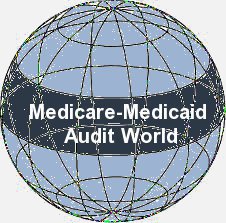 In 1991, in the case of Chaves County Home Health Service Inc. v. Sullivan, the Court of Appeals for the District of Columbia Circuit approved the use of
In 1991, in the case of Chaves County Home Health Service Inc. v. Sullivan, the Court of Appeals for the District of Columbia Circuit approved the use of  statistical sampling and extrapolation by Medicare contractors, currently known as MACs or ZPICs, in conducting post payment reviews. Specifically, the Court held that the Secretary of HHS was authorized to employ statistical sampling and extrapolation as set forth in Health Care Financing Administration (HCFA, now known as CMS) Ruling 86-1 since the Medicare Act did not prohibit statistical sampling and such a procedure was consistent with the Secretary’s duty to prevent overpayments. On January 8, 2001, in Transmittal B-01-01, CMS updated the procedures a contractor was to follow in employing statistical sampling and extrapolation during a post payment review. As in Ruling 86-1, the new procedures imposed no limitation on when the contractor could determine the amount of an overpayment in a universe of claims by extrapolation from an analysis of a sample of the claims in that universe.
statistical sampling and extrapolation by Medicare contractors, currently known as MACs or ZPICs, in conducting post payment reviews. Specifically, the Court held that the Secretary of HHS was authorized to employ statistical sampling and extrapolation as set forth in Health Care Financing Administration (HCFA, now known as CMS) Ruling 86-1 since the Medicare Act did not prohibit statistical sampling and such a procedure was consistent with the Secretary’s duty to prevent overpayments. On January 8, 2001, in Transmittal B-01-01, CMS updated the procedures a contractor was to follow in employing statistical sampling and extrapolation during a post payment review. As in Ruling 86-1, the new procedures imposed no limitation on when the contractor could determine the amount of an overpayment in a universe of claims by extrapolation from an analysis of a sample of the claims in that universe.
In § 935 of the Medicare Prescription Drug, Improvement, and Modernization Act of 2003, Congress added a new subsection (f)(3) to 42 U.S.C/ § 1395ddd. This subsection states:
Limitation on use of extrapolation
A medicare contractor may not use extrapolation to determine overpayment amounts to be recovered by recoupment, offset, or otherwise unless the Secretary determines that–
(A) there is a sustained or high level of payment error; or (B) documented educational intervention has failed to correct the payment error.
There shall be no administrative or judicial review under section 1395ff of this title, section 1395oo of this title, or otherwise, of determinations by the Secretary of sustained or high levels of payment errors under this paragraph.
The meaning of this section became the central issue in the case of Gentiva Healthcare Corp. v. Sebelius.
 Medicare-Medicaid Audit World
Medicare-Medicaid Audit World






